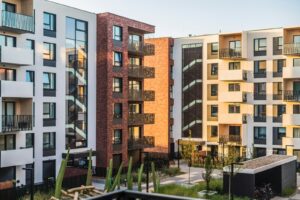
Finding Assisted Living Nearby
Finding Assisted Living Nearby
Finding the right assisted living near me requires careful evaluation. Experts suggest prioritizing key elements like budget limitations, accessible community design and engaging community life.
Consider the location of the community in relation to loved ones, hospitals and medical providers. Some communities offer transportation to and from off-site appointments.
Ask about the community’s medication management program and coordination with healthcare providers. Also, inquire about staffing levels.
1. Location
Finding a suitable assisted living facility near your loved one requires careful research. You should schedule tours and ask the facility plenty of questions. This will allow you to find the right home for your loved one.
Keep in mind that assisted living communities provide care for seniors who need help with activities of daily living, but they do not offer round-the-clock nursing care like a hospital or nursing home. If your loved one is in early- to mid-stage dementia or Alzheimer’s Disease, look for a community with interior courtyards to prevent wandering and a staff with education and training on memory loss.
Also, find out how the community combats loneliness, which is detrimental to physical and mental health. Consider whether a community supports religious activities, offers transportation to churches, temples or mosques and if they allow guests to stay for meals and services.
2. Cost
Unlike nursing homes, where most of the cost of care is covered by Medicaid, assisted living residents or their families must bear the full cost. Add in a host of charges and the monthly fees quickly drain even the most well-planned retirement nest egg.
The national median cost for assisted living is $5,511. But prices vary widely, as do costs by state and region.
Seniors needing hands-on assistance with daily activities should consider assisted living as a viable option. But it’s important to know the costs. Besides the cost of rent, seniors will also face charges for services that are packaged in bundles or levied a la carte. In addition, they might need to factor in the cost of transportation and entertainment. And if they choose to live in a continuing care retirement community (CCRC), they’ll likely pay for independent living, assisted living and skilled nursing on one campus.
3. Amenities
Assisted living communities often offer social activities, like game nights and movie outings, as well as opportunities for physical exercise. The activities are designed to help reduce feelings of isolation and loneliness and to promote mental and physical health.
When touring assisted living facilities, ask to see the activity calendar and speak with the activities director. This will allow you to gauge the level of involvement and approach taken by the staff in designing engaging activities.
Assisted living communities are residences for adults who require limited supervision and assistance with daily tasks but do not need medical care. The residents must be able to live safely and independently, be free of serious physical or mental impairments, and not pose a threat to themselves or others.
4. Activities
An assisted living community’s activities and events give residents a sense of purpose, help them feel connected to each other, and enhance their quality of life. They also offer opportunities to improve their health, boost their self-esteem, and develop new skills.
Socialization is a crucial component for seniors and it helps reduce depression, lower the risk of falls and illness, and boosts cognitive function. Group activities are a great way to build relationships and encourage participation, and many communities offer a wide range of indoor and outdoor activities to meet a variety of interests and abilities.
For example, some residents enjoy dancing classes to stay physically fit and others find it soothing to listen to music. Other popular options include painting, playing a board game, or learning the art of origami.
5. Staff
A good assisted living facility will have a full-time administrator, care staff to assist residents with daily activities, a nurse or doctor on call, and a system of emergency response. When touring facilities, ask about these details and whether staff members have a nursing background.
Ask how they nurture a sense of community among their residents and what opportunities for engagement they offer, including surveys or group discussions to gauge happiness levels. A good sign is when you see residents interacting with each other and staff alike.
Finally, make sure to visit potential options more than once—and preferably unannounced—to get a feel for the place. Attend a mealtime and observe how the staff interacts with residents. Ask about the staff-to-resident ratio and any training they undergo.

